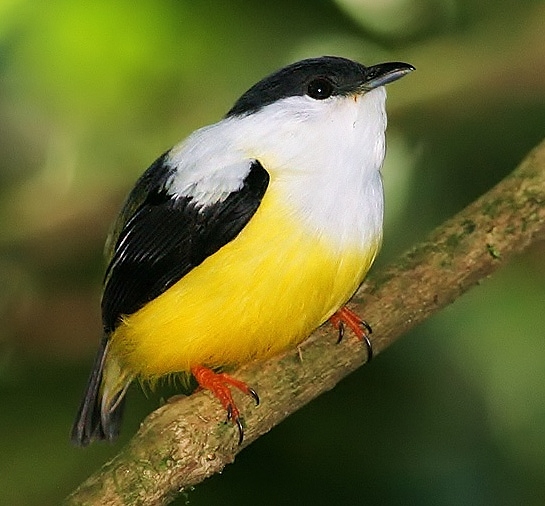 |
| Photo by Tristan Bantock (Flickr) |
Common name:
white-collared manakin (en); rendeira-de-colar-branco (pt); manakin à col blanc (fr); saltarín cuelliblanco (es); weißbandpipra (de)
Taxonomy:
Order Passeriformes
Family Pipridae
Range:
This species is found along the Caribbean slopes of Central America, from south-eastern Mexico to northern Panama.
Size:
These birds are 11 cm long and weigh 18-20 g.
Habitat:
The white-collared manakin in found moist tropical forests and scrubland, typically in open woodlands, thickets along forest edges, second growths, old cocoa plantations and along watercourses. They occur from sea level up to an altitude of 950 m.
Diet:
They mainly feed on fruits, but will also take some small insects.
Breeding:
White-collared manakins are polygamous, with the males displaying in leks to attract females, having no further part in the reproductive process after mating. The female builds the nest, a delicately woven cup made of black fungal rhizomorphs, plant fibres and inflorescences, placed in an horizontal fork in a tree up to 2 m above the ground. There she lays 2 white eggs with brown sprinkles, which she incubates alone for 18-21 days. She also feeds an takes care of the chicks alone until they fledge.
Conservation:
IUCN status – LC (Least Concern)
This species has a relatively large breeding range and a global population estimated at 50.000-500.000 individuals. The population is suspected to be stable in the absence of evidence for any declines or substantial threats.







